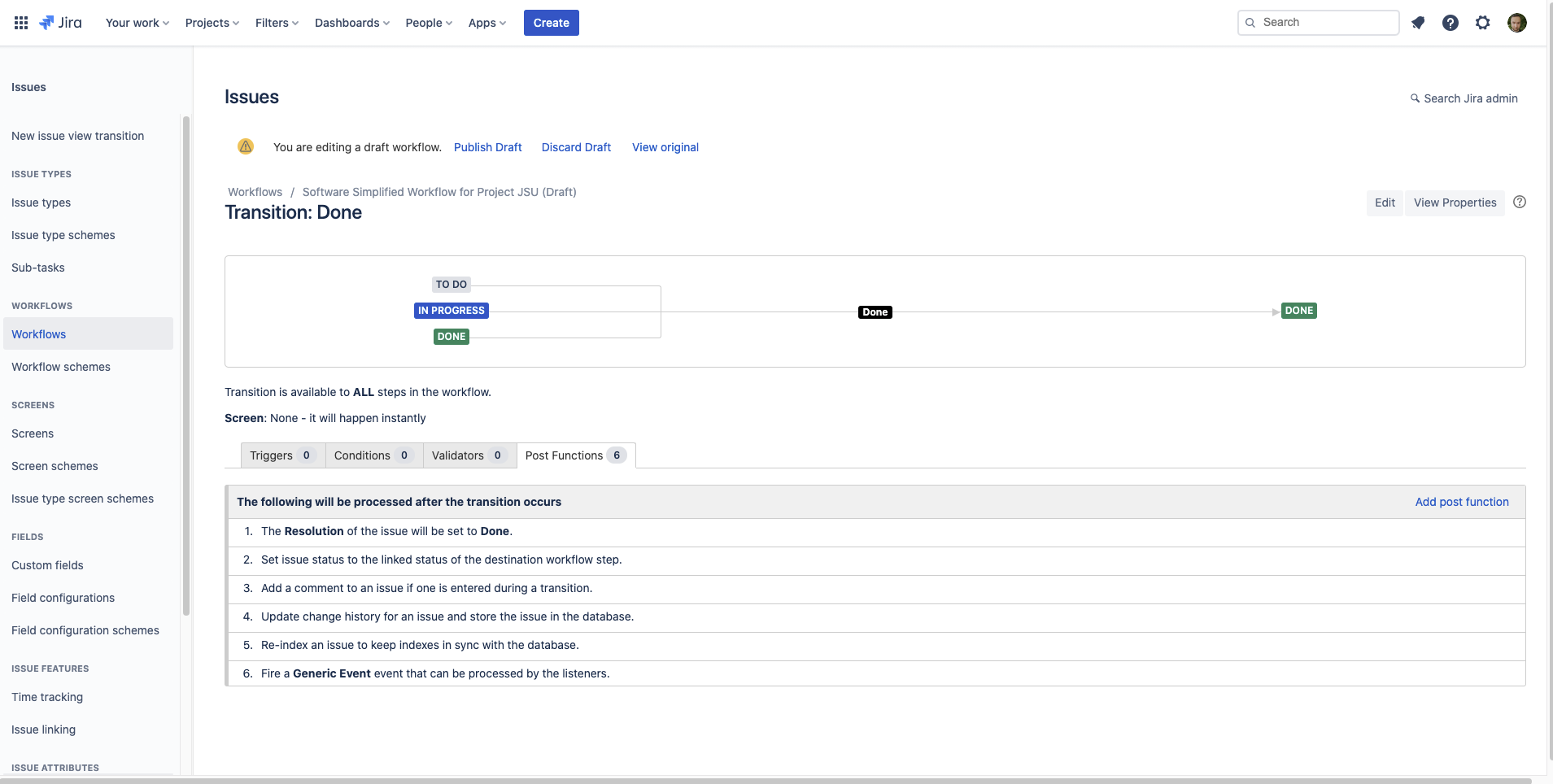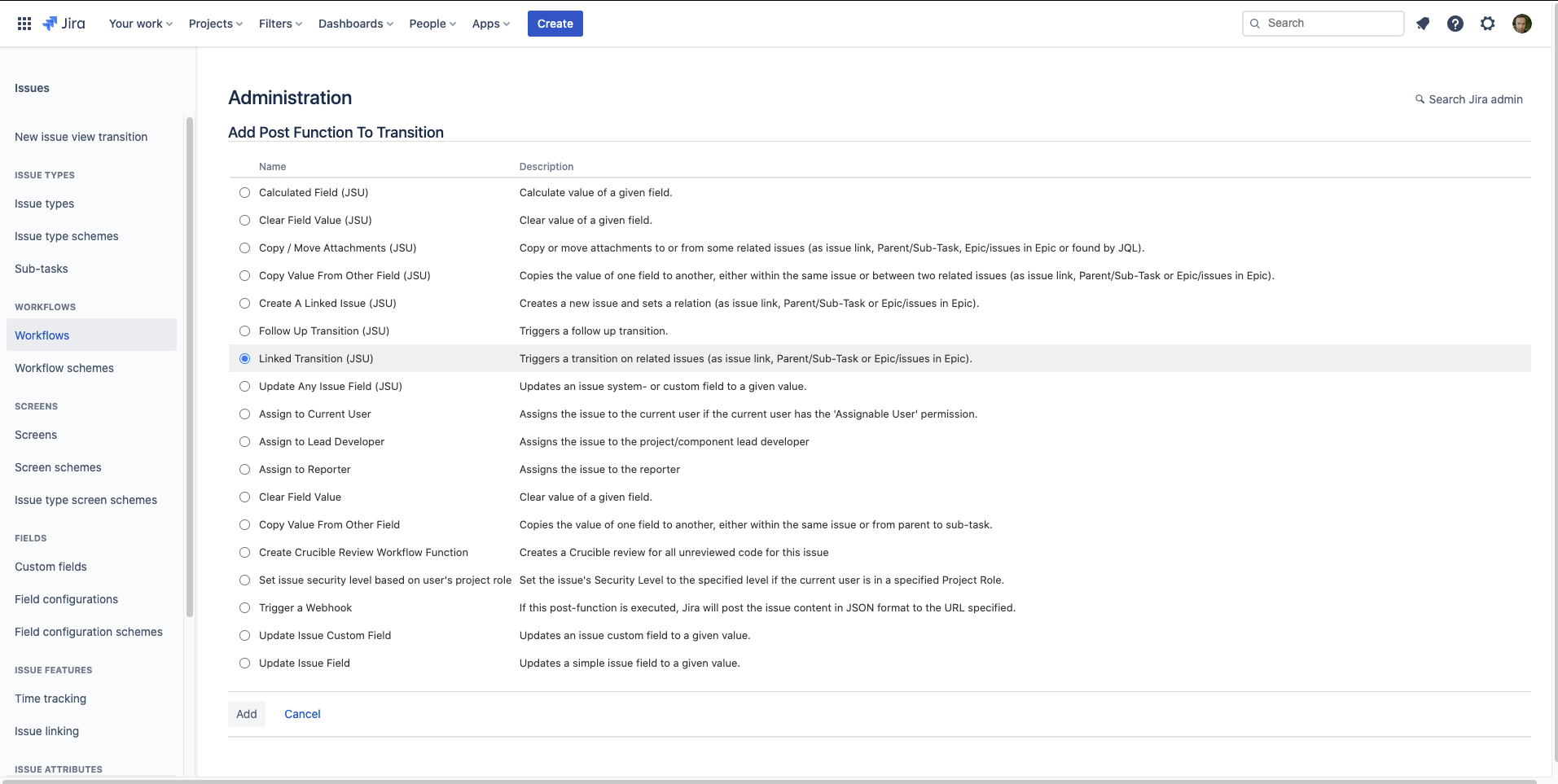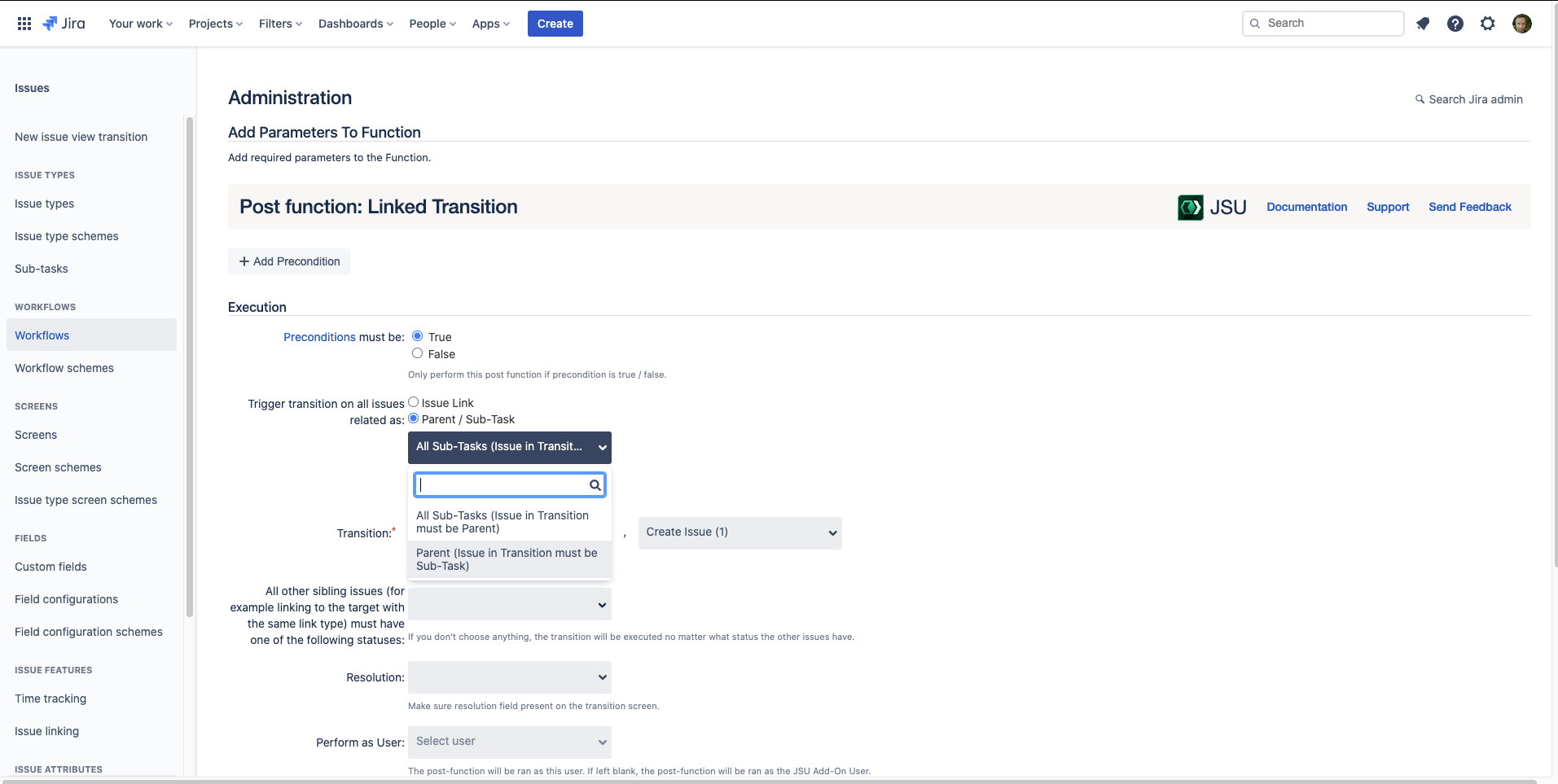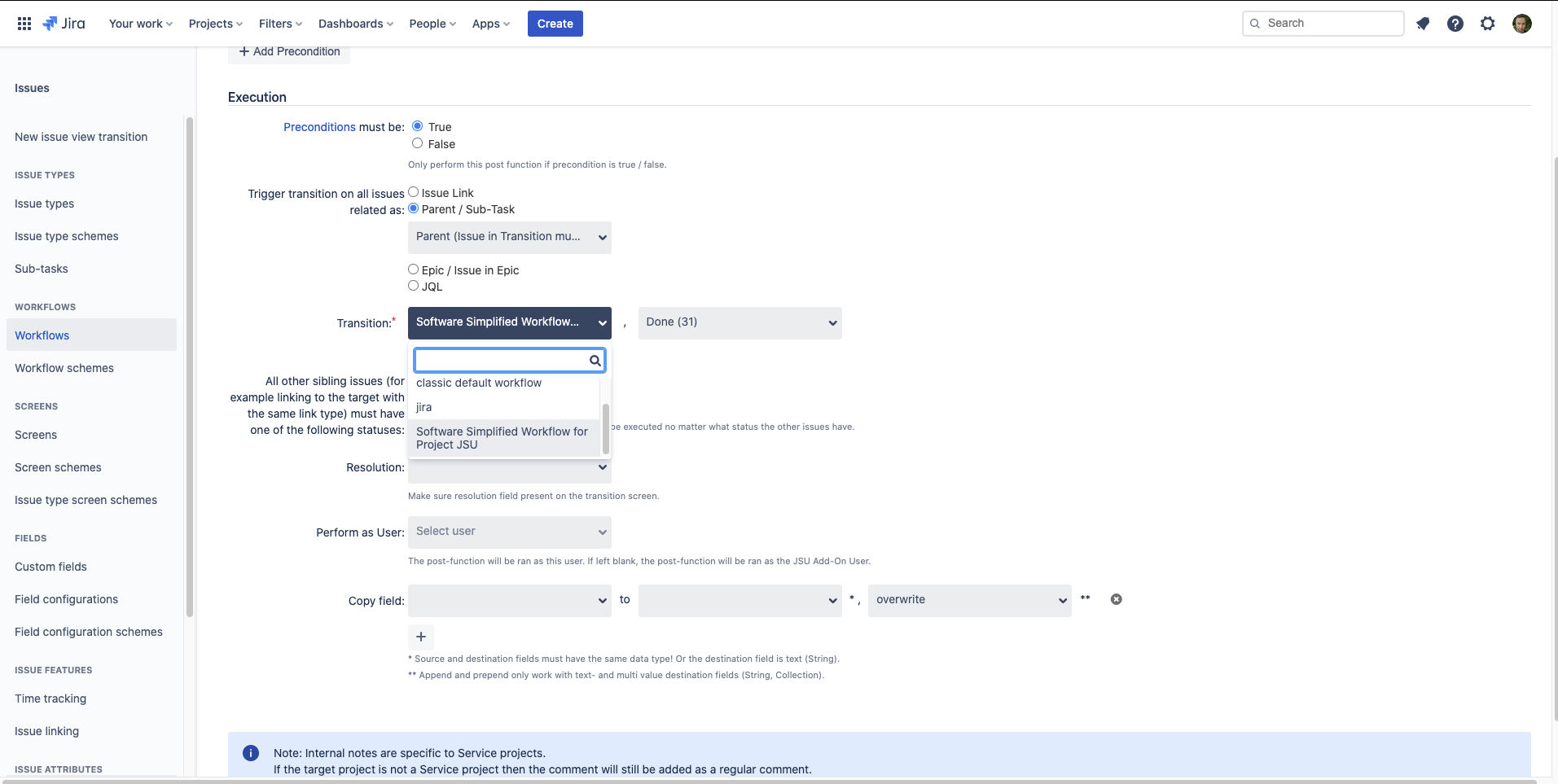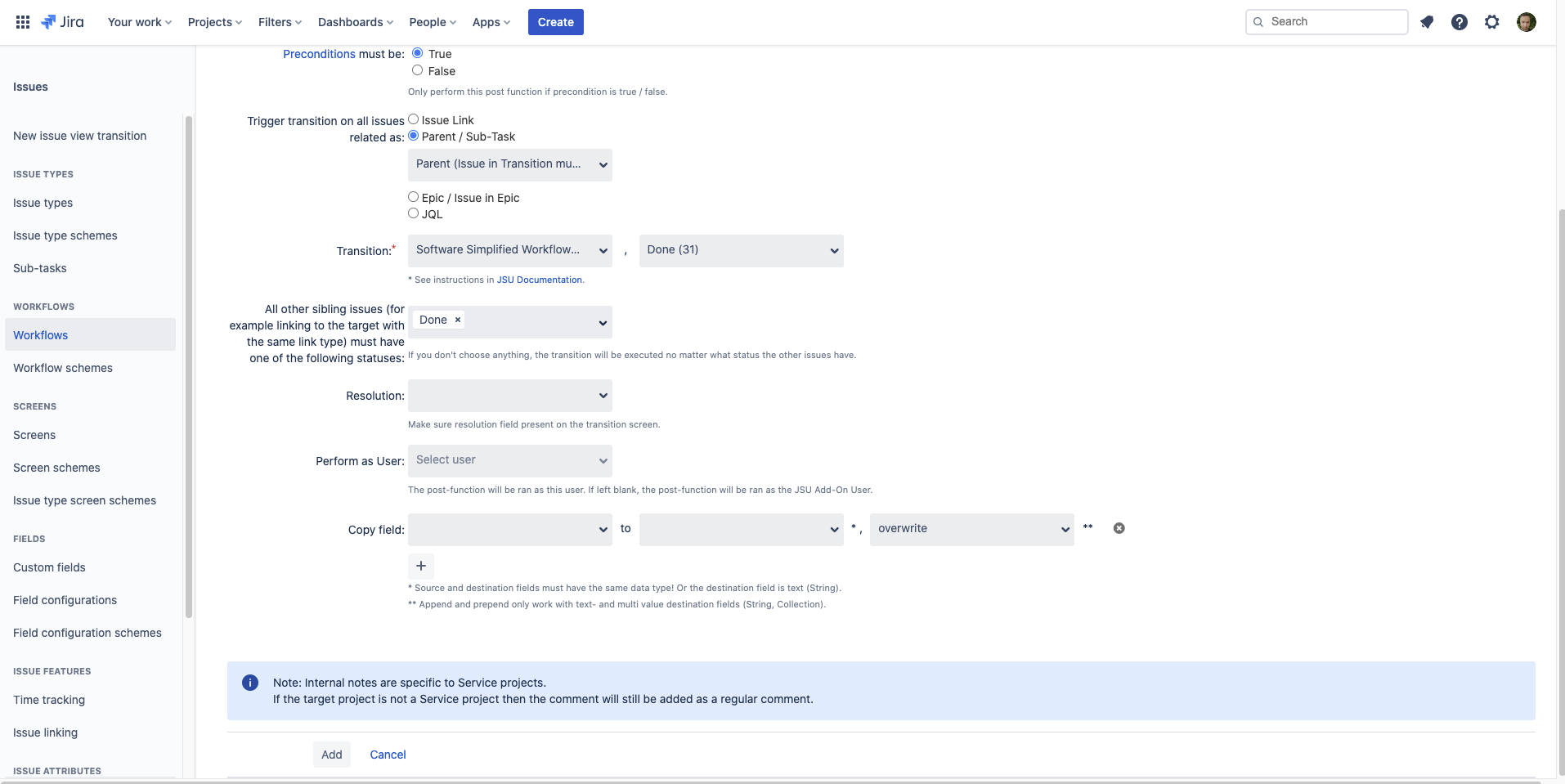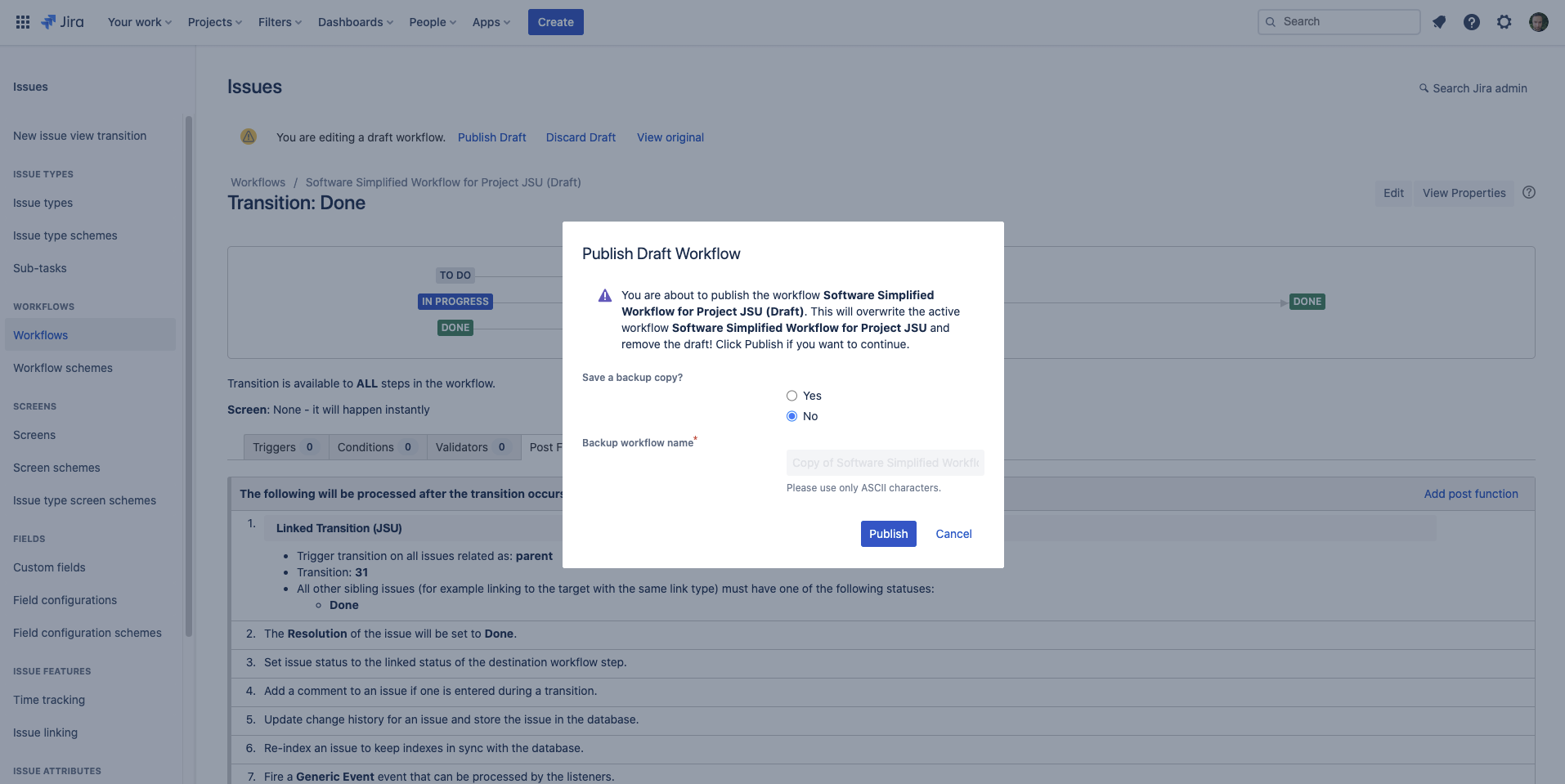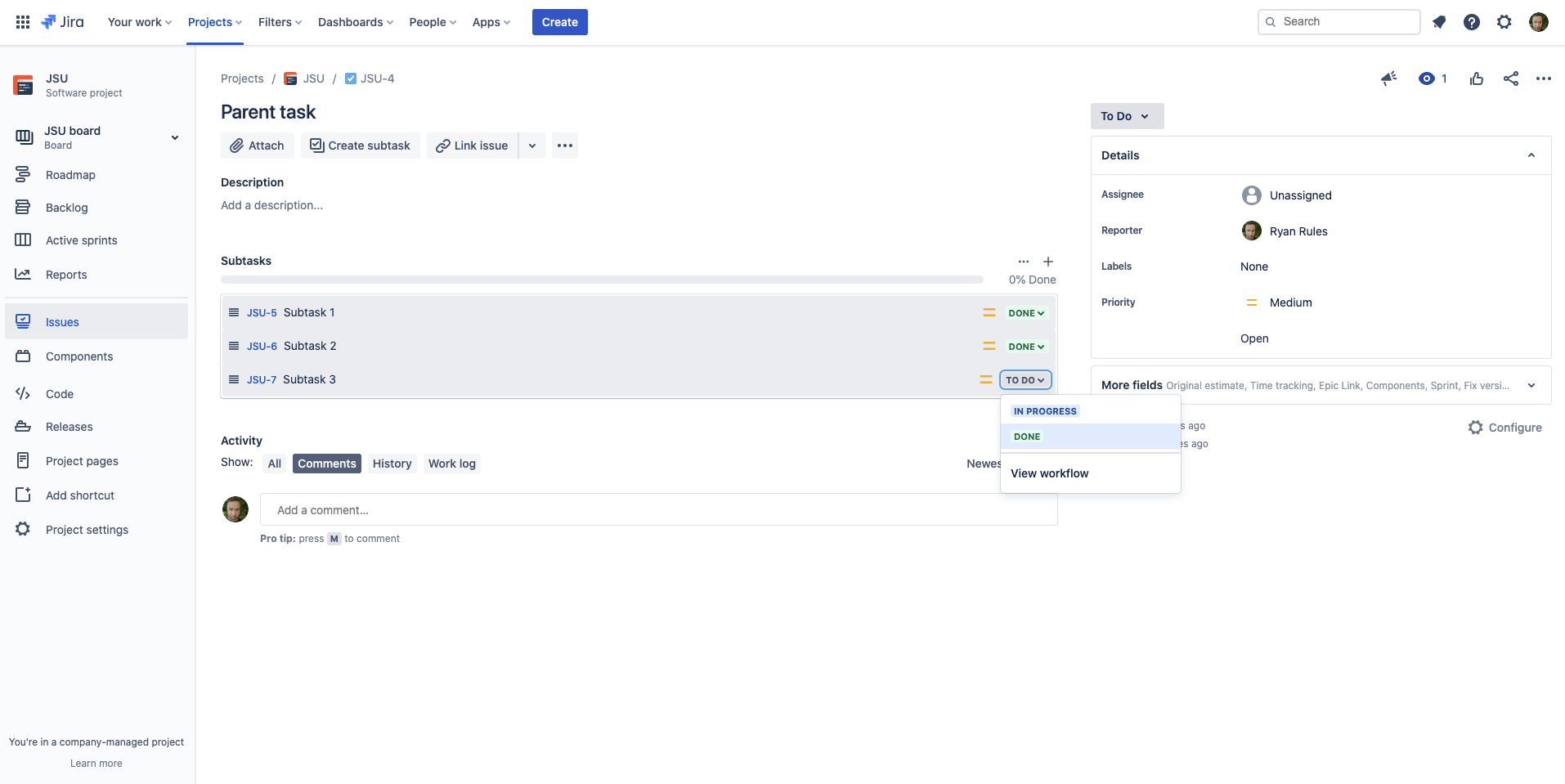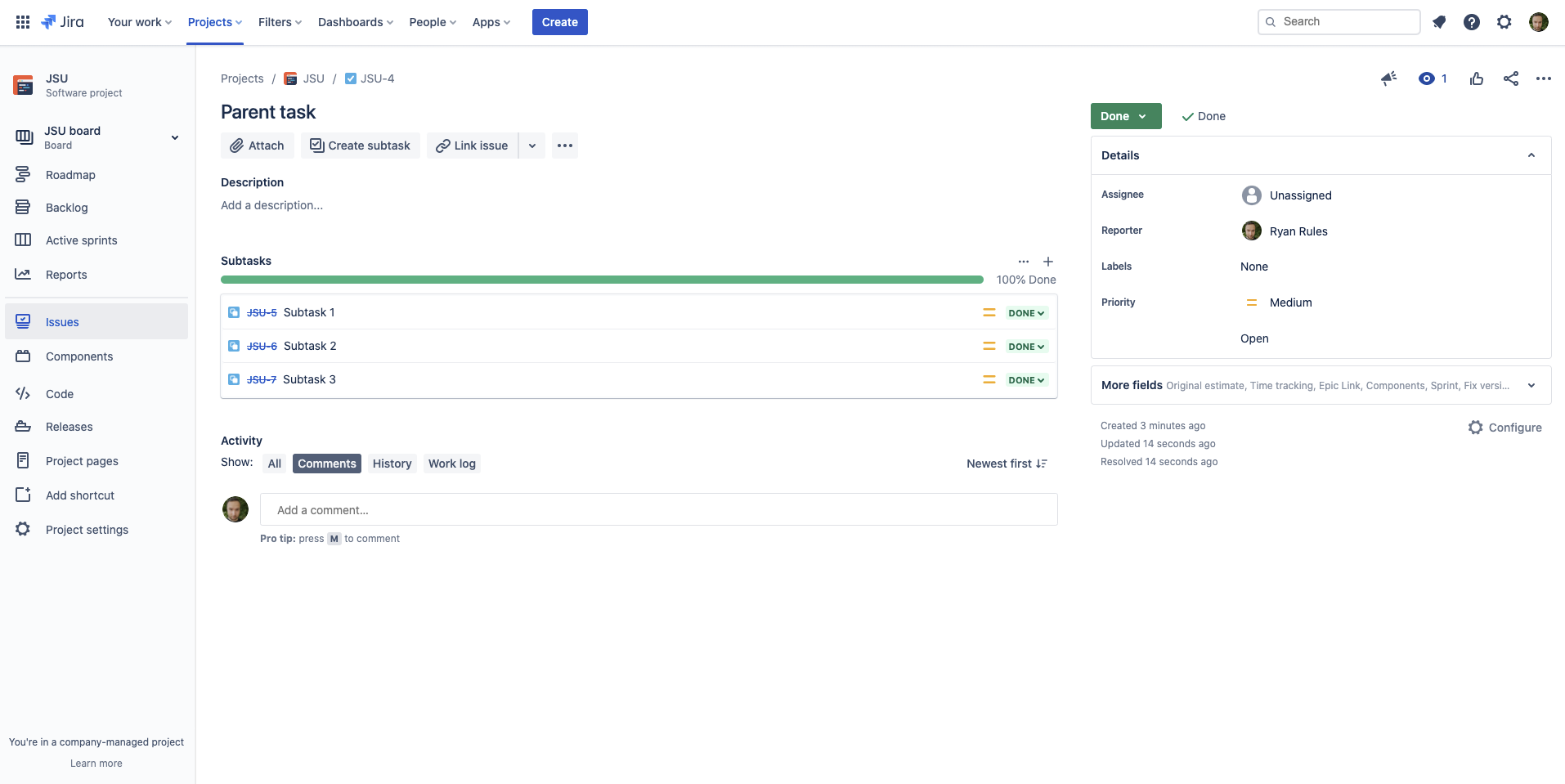...
...
| Panel | ||||||||||
|---|---|---|---|---|---|---|---|---|---|---|
| ||||||||||
This is the documentation of JSU for Jira Cloud. If you are using JSU on Jira Server/Data Center, |
...
you can find the documentation here. |
| Info |
|---|
NOTE: This guide starts from the "Edit Workflow" screen of a chosen project. If you're not sure how to get to this page, follow the onboarding steps first on either: /wiki/spaces/JSUCLOUD/pages/27801900 or /wiki/spaces/JSUCLOUD/pages/1147633753 |
 Keep your backlog clean by ensuring that parent issues are automatically closed when all of their sub-tasks are completed
Keep your backlog clean by ensuring that parent issues are automatically closed when all of their sub-tasks are completed
↓ Follow the step-by-step guide below to see how to configure this automation in your Jira instance. ↓
Configure the post function
- If you haven't already, switch the workflow viewer into "Diagram View" and ensure you are in "Edit Mode". You can enter Edit Mode by selecting the "Edit" option towards the right of your workflow viewer.
...
- We want to close parent issues when their' sub-tasks are done, so we need to add the rule specifically to when issues transition to the
status. Click on the arrow that points inwards to this status to show the transition rule menu.Status colour Green title DONE
We want to add a post function to this transition, which runs an automation after the issue has been transitioned to the target status. Select "Post Functions" from the list which opens a new tab.
...
- In the Post Functions table - click "Add post function" to view all available post functions.
...
...
- Choose "Linked Transition (JSU)" and then click "Add" at the bottom of the screen.
...
- We want the parent to automatically close when the last sub-task is closed, so let's set
...
- "Trigger transition on all issues related as" to "Parent / Sub-Task >
...
- Parent (Issue in Transition must be Sub-Task)".
...
- Now, we have to tell JSU which transition and in which workflow we want to transition the parent issue we just selected. As we want to keep this rule simple, we only want this rule to apply to issues in our "JSU" project. So for "Transition", we select the workflow that applies to our JSU project and the "Done" transition. This means any parent issues will be transitioned to
as part of the rule we're configuring.Status colour Green title DONE
...
...
- But remember, we only want the parent to be transitioned to
if ALL of its sub-tasks are alsoStatus colour Green title DONE
. To configure this, for "Status colour Green title DONE
...
- All other sibling issues (for example linking to the target with the same link type) must have one of the following statuses" we're going to set this as "Done".
...
- The remaining fields are optional. For your reference though we can talk about how you might want to use the remaining fields. If you're happy as is, feel free to proceed to Step #9.
- Resolution - If you would like to add a resolution to the parent issue after the post function closes it, you can define which resolution to choose in this field.
- Perform as user - In Jira Cloud, all "actions" both manual and automated, must be performed by a registered Atlassian account. If you'd like JSU to impersonate another user to run its automation, you can choose that user here. It's important to note that the impersonated user must have the right account privileges to perform the action. If you're not sure, just leave this field blank. Leaving the field blank means the automation will be run as the "JSU add-on user" which has elevated privileges and can perform most functions.
- Copy field - If you'd like to add more information to the parent issue as part of the automation, you can describe what information you'd like to add here.
...
- Now you're ready to save your new post function. To do this, click "Add" at the bottom of the page.
- You can now see a summary of all your post functions applied to this transition. To confirm this new workflow and test it out, you need to publish it. At the top of the screen click "Publish Draft" and then either "Yes" or "No" if you'd like to save a backup of the workflow before our changes are applied, followed by "Publish" again.
...
Test the post function in the workflow
Now we can go test the post function in action!
- Head to an open issue that has one or more open sub-tasks within it.
...
- Now proceed to transition all of the subtasks to
.Status colour Green title done
...
- Now refresh/reload the parent issue. You'll notice that it has now also been transitioned to
- which means our post function has worked as expected!Status colour Green title done
...
- Congratulations! You've just configured your very own automation!

Feel free to continue exploring other use cases for this
...
Post-Function, such as "Close parent Epic when all the issues within the Epic are done" and more!
Need more information or help? Get in touch!


